PROTECT YOUR DNA WITH QUANTUM TECHNOLOGY
Orgo-Life the new way to the future Advertising by AdpathwayMore often than not, beautiful plants need extra care. That isn’t true for these 15 plants that spread in shade. They love the shade, and they spread readily when they’re thriving. Plant a few in empty spots of the yard and watch them take over seemingly overnight!
Aside from having shade, your garden may be wet, dry, hot, or cold. Many different factors create microclimates in your yard. For the best results, choose beautiful plants that thrive in your garden’s natural conditions.
You don’t need a giant yard to cultivate these plants, as some grow well in containers and planters! They’ll fill the pots with growth and spill over their edges.
Whether you have shade on your balcony or in your backyard, these 15 beautiful plants spread aggressively in the shade.
Made in the Shade Flower Mix Seeds
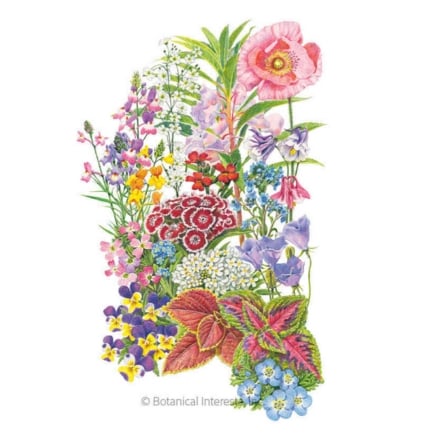
- Bright, Colorful Blooms for Dappled Shade Areas
- Grows Well with as Little as Four Hours of Sun
- Attracts Bees, Butterflies, and Other Pollinators
- Includes 14 Shade-Tolerant Annuals and Perennials
- Adds Long-Lasting Interest to Low-Light Garden Spaces
Hardy Impatiens
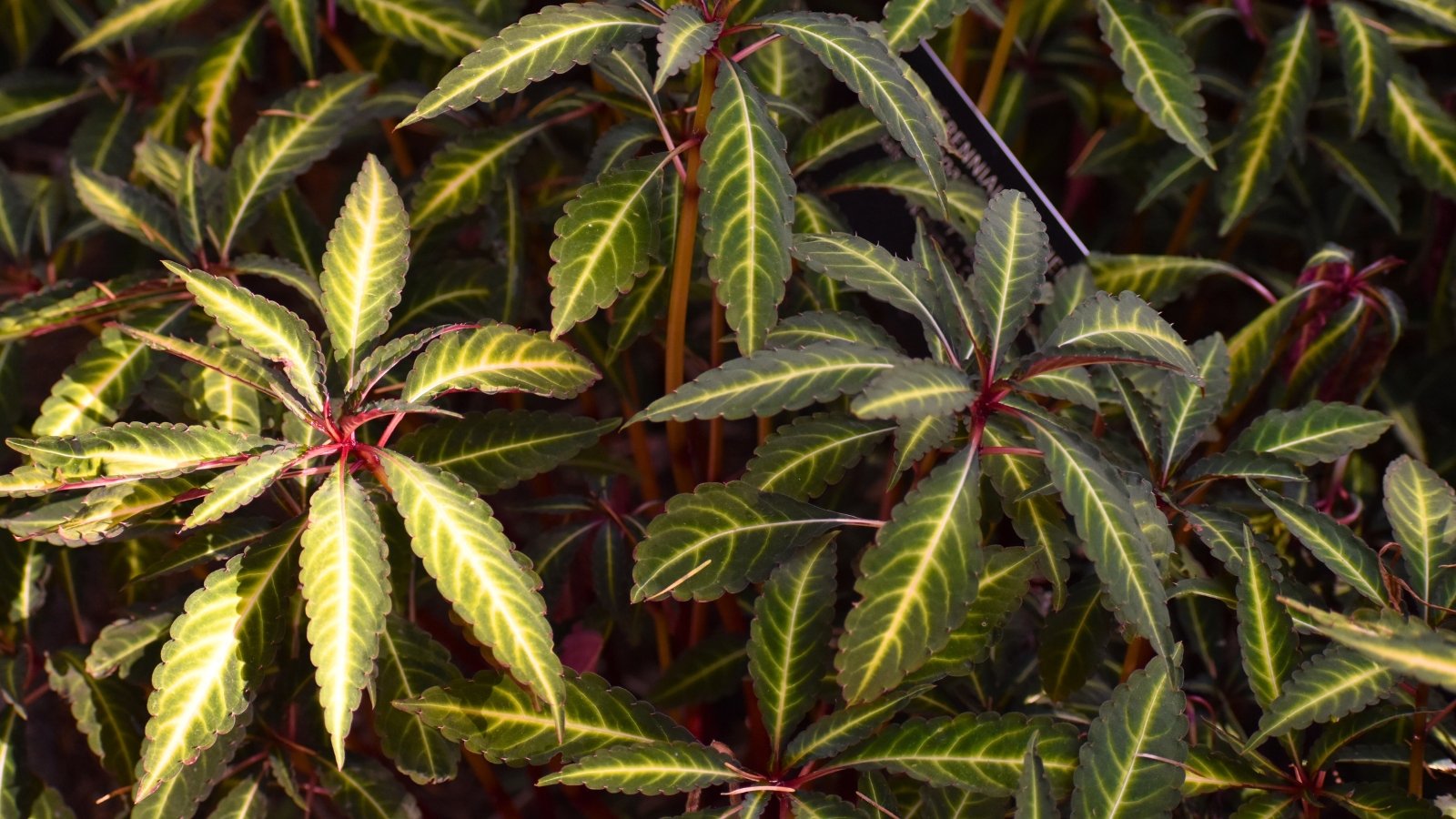 Spreads by stolons and thrives with regular moisture.
Spreads by stolons and thrives with regular moisture.These lovely spreaders are unlike most perennials. Hardy impatiens have single stems that emerge from the ground with serrated, hand-like leaves at their ends. Dangling flowers sprout beneath the leaves, attracting pollinators and hungry insects.
Hardy impatiens uses aboveground roots called stolons to creep along the ground. You’ll see new sprouts growing on the plant’s perimeter each year. The more moisture you give the plants, the more sprouts they’ll grow.
These plants spread in shade and prefer moist soils. It’s relatively pest-free, though it tends to wilt quickly in dry sites. Use an overhead sprinkler or soaker hose to water it regularly.
Sweet Box
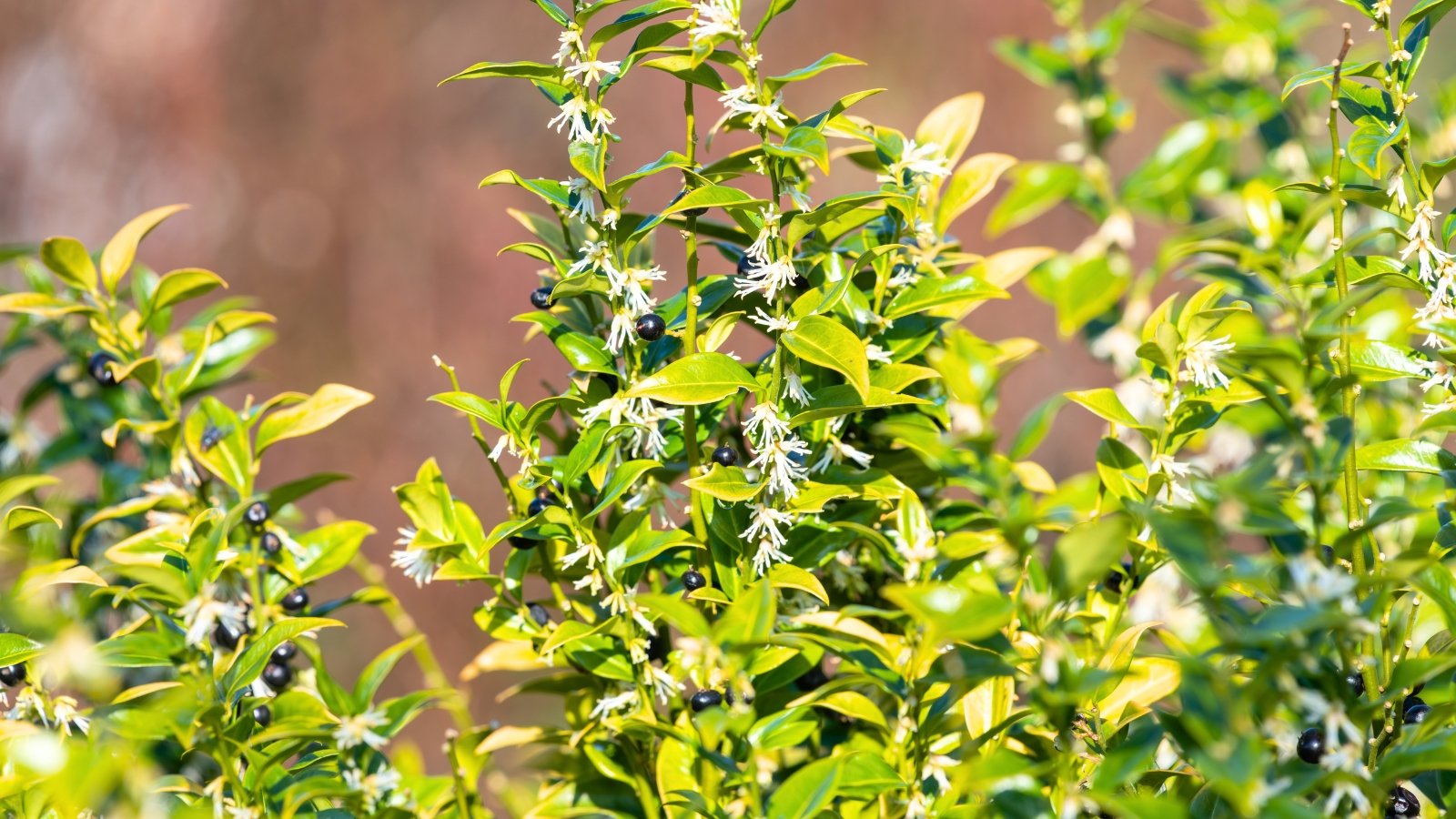 Fragrant and evergreen, it thrives in sheltered corners.
Fragrant and evergreen, it thrives in sheltered corners.Sweet box fills the yard with fragrance! Its flowers emit a pleasing aroma that’s floral, citrusy, and sweet. Plant this shrub near your pathways and doorways so you can enjoy the aroma every time you walk by.
Sweet box loves the shade and is tolerant of short dry periods. It works well as a background for other plants, as its lush green leaves are dark and rich. After the flowers fade, dark black berries form that are beautiful in contrast with the foliage.
Because sweet box flowers in late winter, it’s a great choice for a winter garden. Plant it alongside other cold-weather lovers like hellebores, snowdrops, and daffodils.
Strawberry Geranium
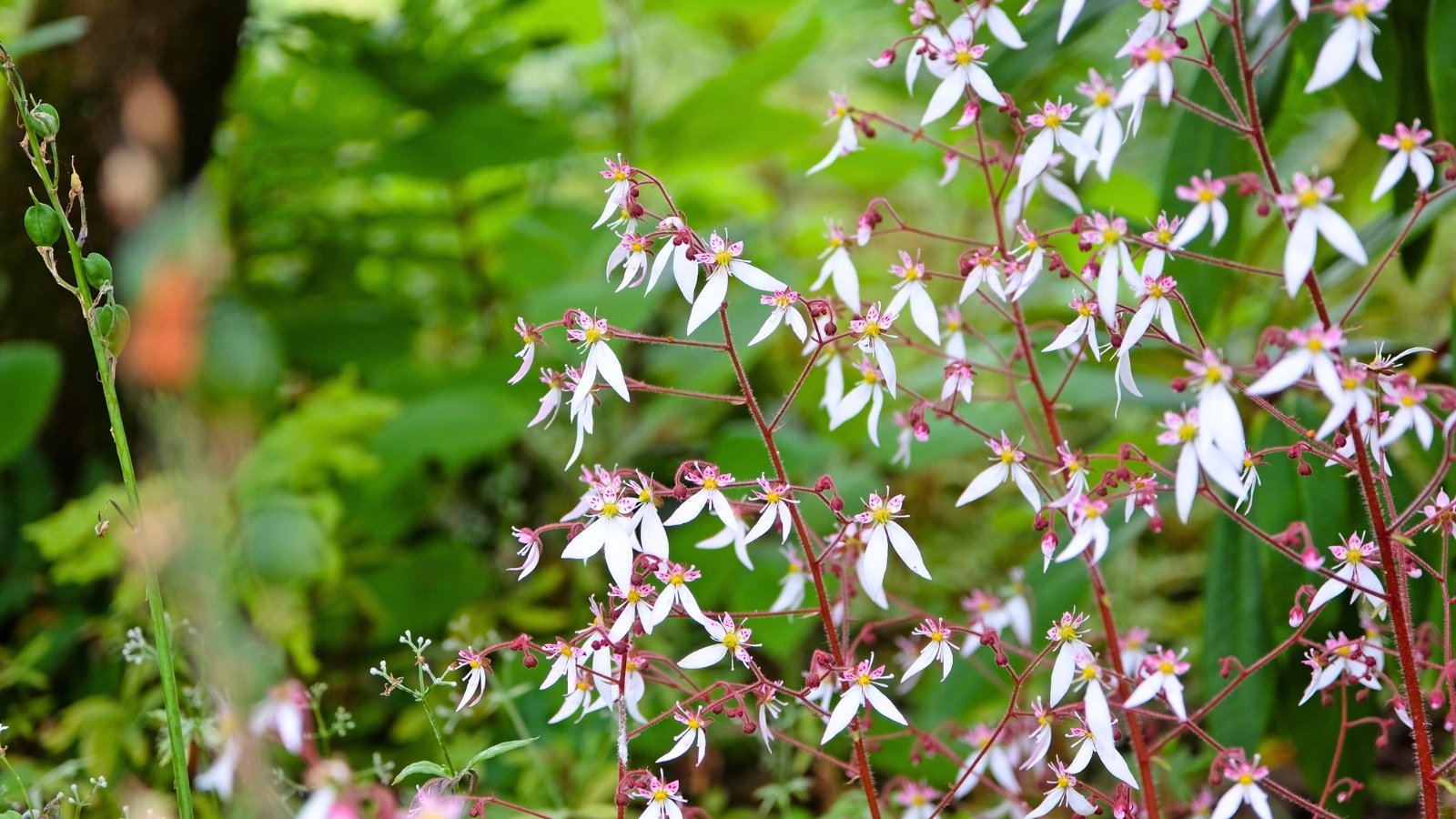 Sends out plantlets on red stolons each spring.
Sends out plantlets on red stolons each spring.Strawberry geraniums are efficient plants that spread in the shade! They use stolons, like hardy impatiens, to sprout new plants away from the original. You’ll see red, thin stems emerge in spring with plantlets on their tips.
Many types of strawberry geranium exist for the curious gardener. Grow the species type for green leaves with white markings and burgundy undersides. Or, opt for a special cultivar like ‘Maroon Beauty.’ It has subtle red markings on the top of the leaves and maroon undersides.
Though strawberry geranium isn’t a geranium or a strawberry, it’s a great perennial for the ornamental garden. Let it roam open spaces in the shade, and give it regular water during the growing season.
Spearmint
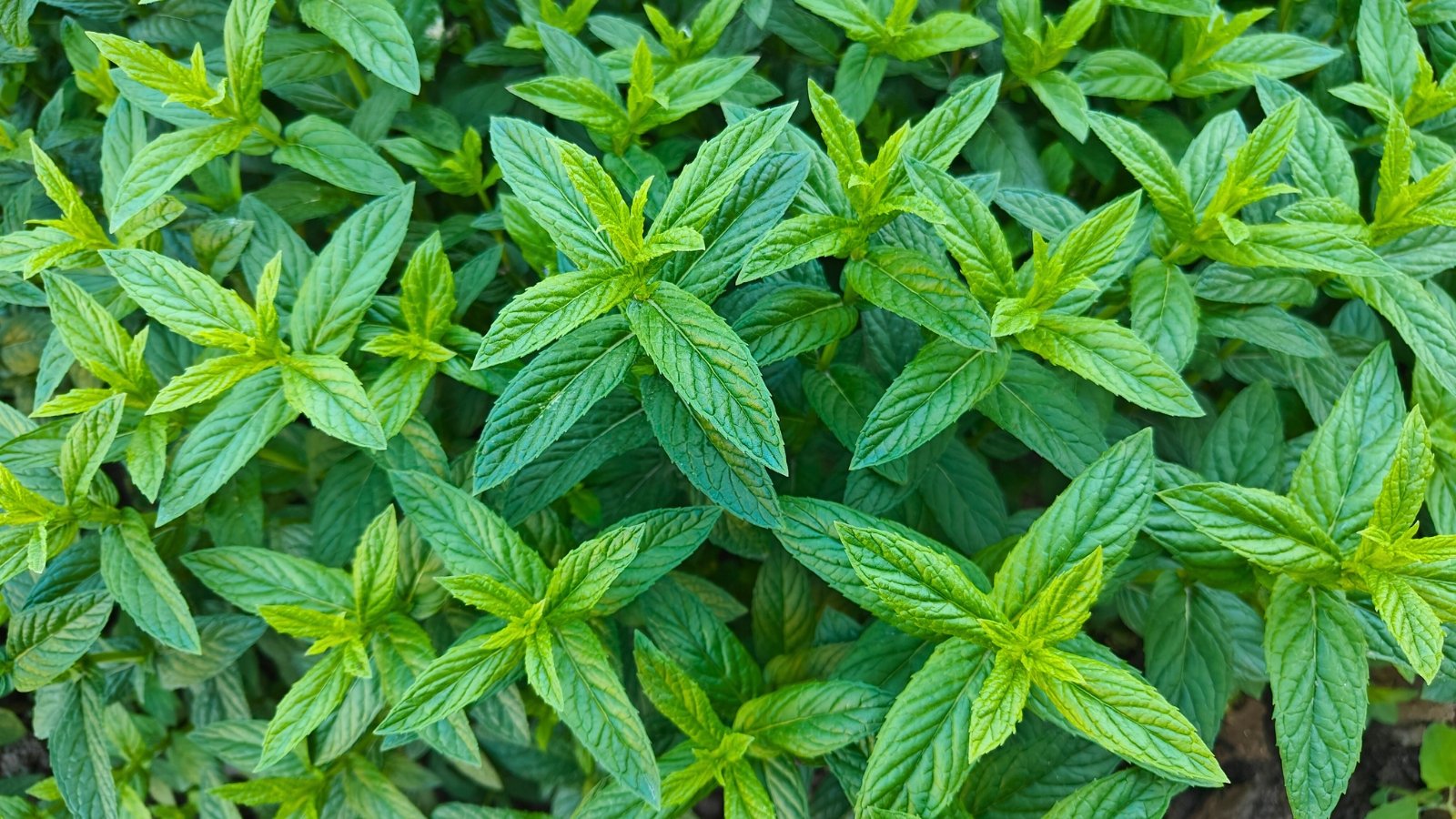 Invasive spreader that’s best kept in containers.
Invasive spreader that’s best kept in containers.If you haven’t planted mint before, you may not know its dangers. It’s an unruly spreader. You may want to pull it up after planting. These plants are extremely difficult to remove!
Because it’s aggressive and shade-tolerant, mint may be the perfect choice for an open bed or planter. Avoid growing it in the ground, as it’ll take over your nearby plants. Use it to blanket pots, containers, and beds in the shade with lush, aromatic foliage.
Native mints are excellent alternatives to spearmint and peppermint. Consider growing types like Canadian wild mint, or any of the species in the mountain mint genus, Pycnanthemum.
Redwood Sorrel
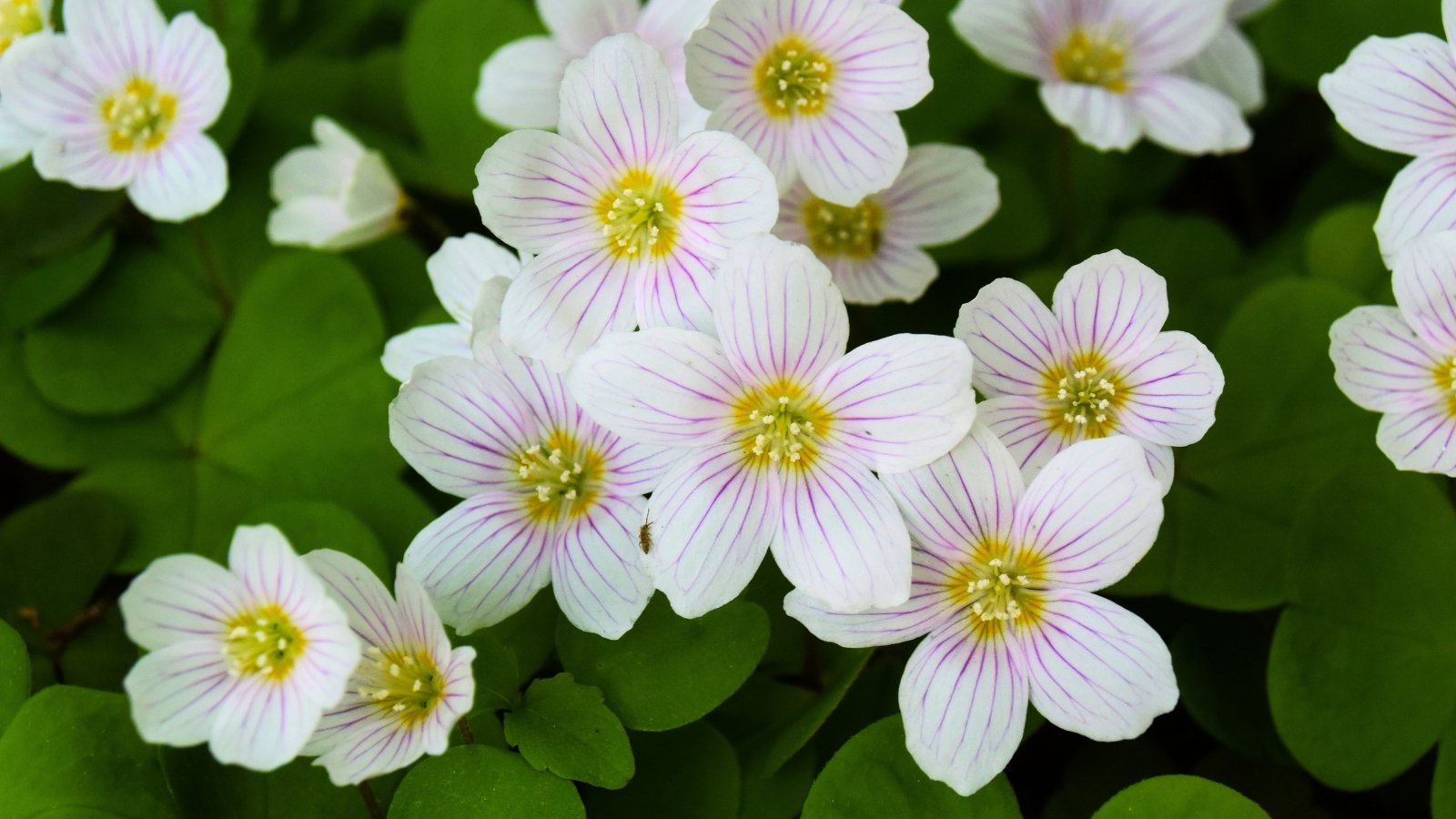 Forms lush cover but may go dormant without water.
Forms lush cover but may go dormant without water.Redwood sorrel resembles clover plants with its compound leaves and small flowers. It’s a native perennial of the West Coast and Pacific Northwest, growing beneath the canopies of tall redwoods and Douglas firs.
In the garden, these plants spread quickly in the shade. It’ll tuck itself into every empty nook and cranny of your yard. Let it form a dense ground cover, or use it to fill shaded containers with green leaves.
Redwood sorrel tolerates short droughts, but it prefers consistent moisture during the growing season to stay green. Without additional water, the plant will enter a summer dormancy before returning the next spring.
Periwinkle
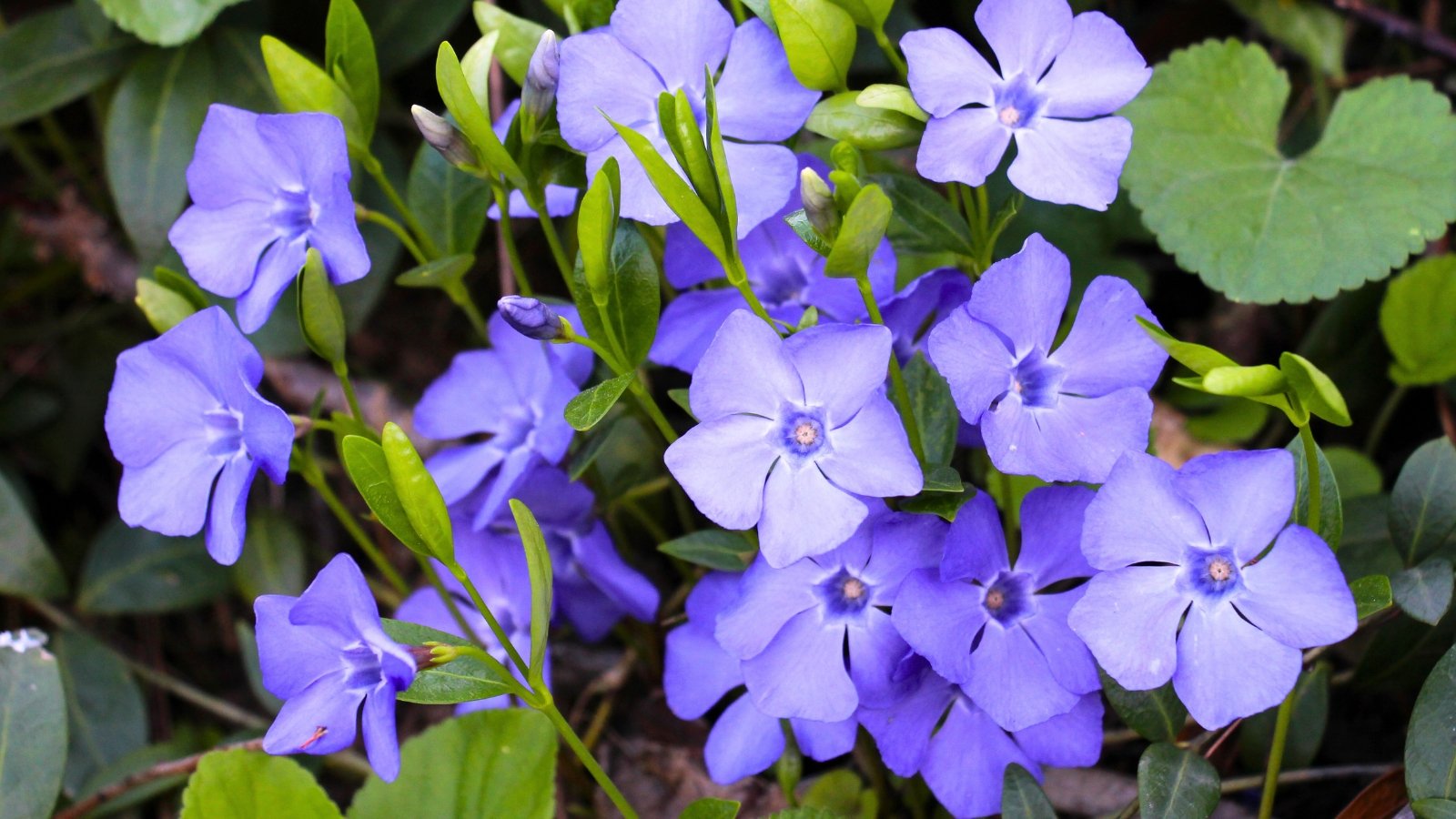 Covers ground quickly but can become invasive.
Covers ground quickly but can become invasive.Periwinkle stays low to the ground and covers bare soil with ample growth. It’s aggressive enough to outcompete other plants, which is why it’s a problem in some states. Consider using an alternative plant if periwinkle is invasive in your region.
It’s not difficult to see why gardeners loved this plant throughout history. It features lanceolate green leaves on wiry stems. Light violet flowers appear in spring, and they continue blooming sporadically over the summer.
Sweet Violet
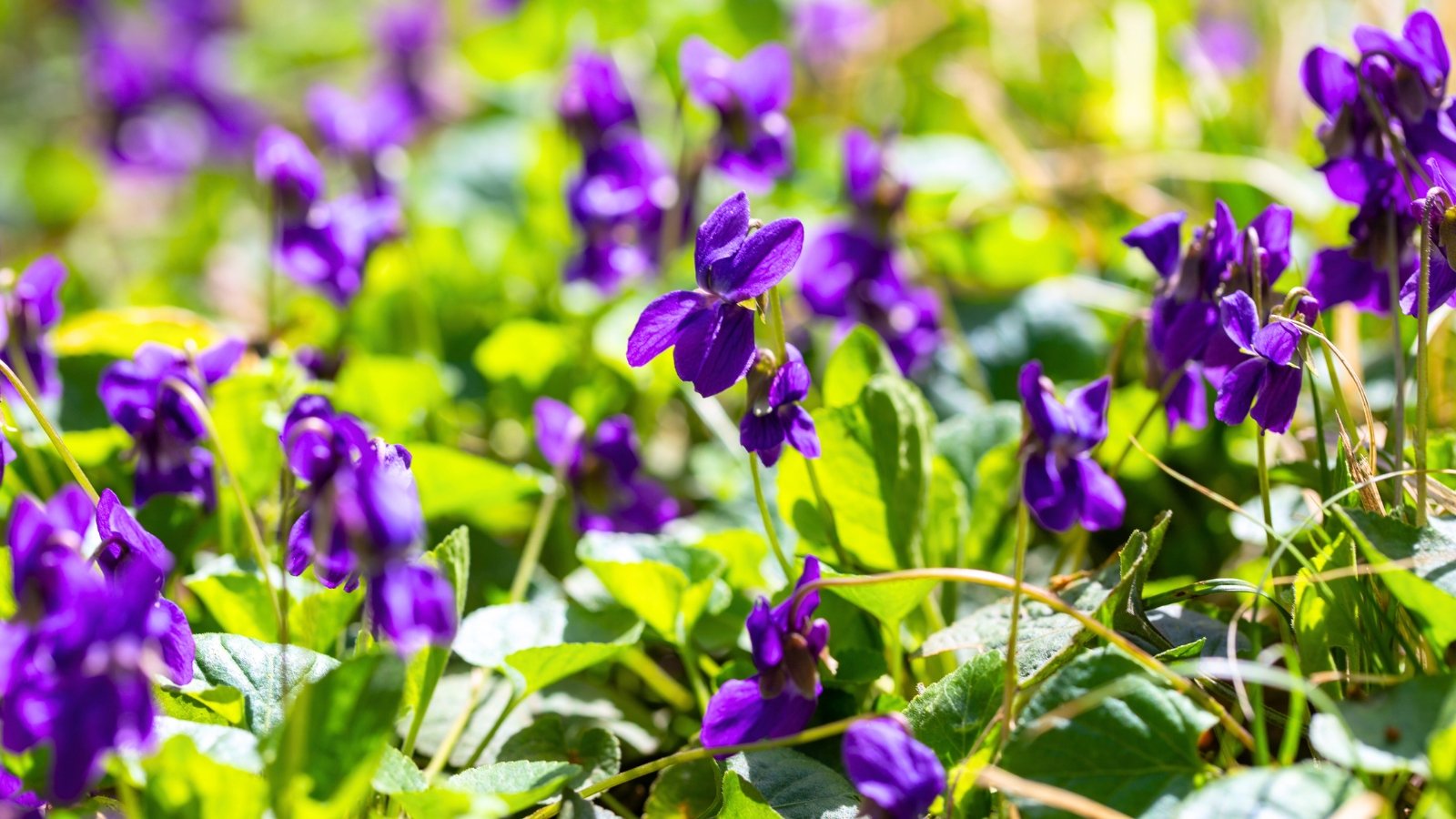 Needs regular water to stay full and leafy.
Needs regular water to stay full and leafy.Sweet violets are so aptly named for their sweet-smelling violet flowers that bloom in spring. They use stolons to spread in shade and form colonies. Let them flourish in the shade and enjoy their purple flowers and heart-shaped leaves.
Sweet violets need regular moisture to thrive. They’ll tolerate temporary dry periods, but they prefer consistent watering during the growing season. The more water they receive, the lusher and more vigorous the leaves will be.
Wintercreeper
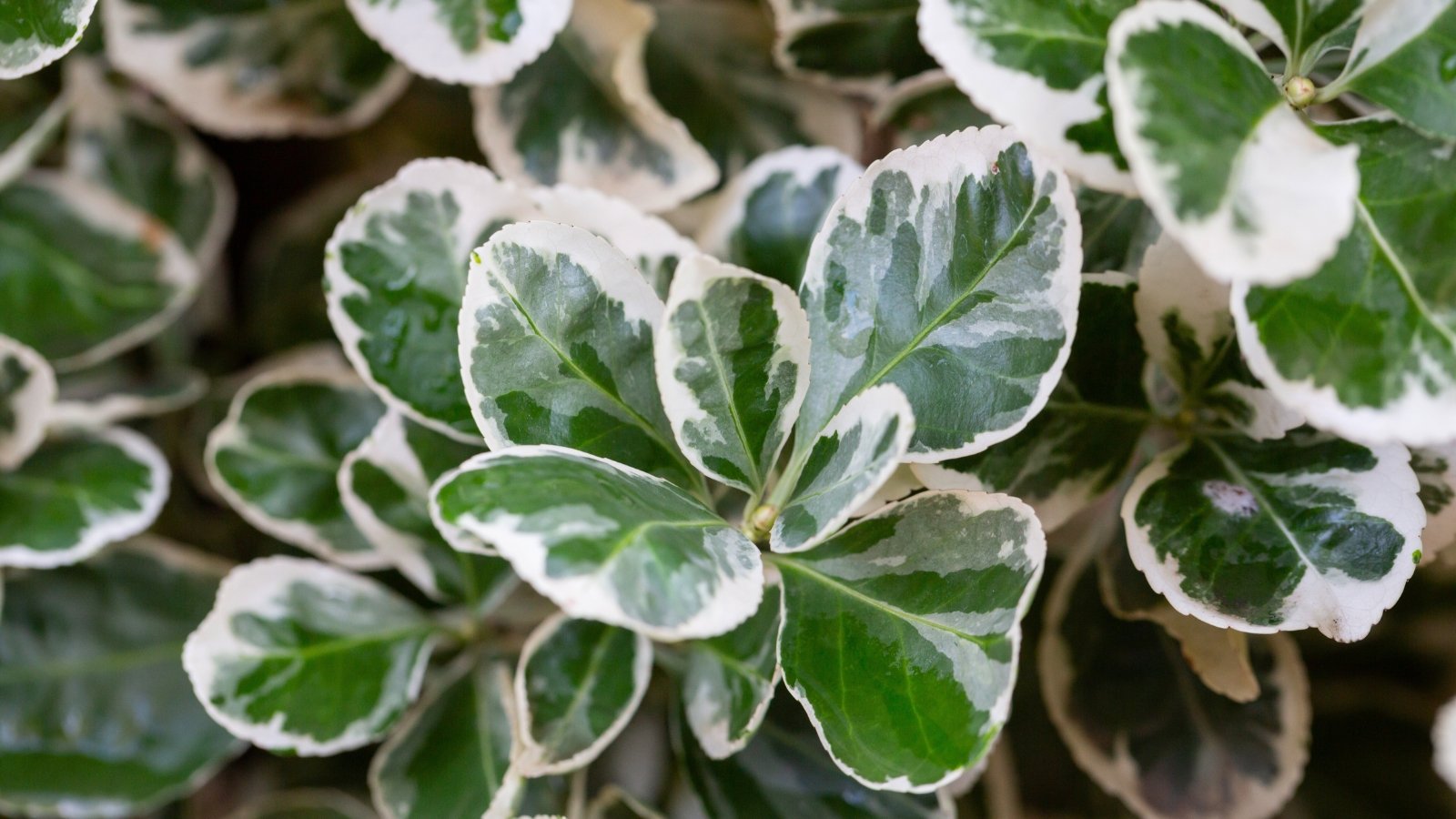 Vigorous grower that roots wherever stems touch soil.
Vigorous grower that roots wherever stems touch soil.Winercreeper uses its woody tendrils to roam about the yard. The stems root when they touch the soil and make dense stands of tough growth. Excelling in sun or shade, wintercreeper is a beautiful and versatile perennial groundcover.
Without trimming, wintercreeper may grow into a shrub or a tall vine. It has multiple forms, like pothos and monstera plants. The vines creep up trees, cover the ground, or form dense shrubs that reach six feet high.
Take caution with this plant, as it’s highly invasive in multiple parts of the U.S. Consider using native alternatives, like yerba buena or Carolina jessamine.
Creeping Lilyturf
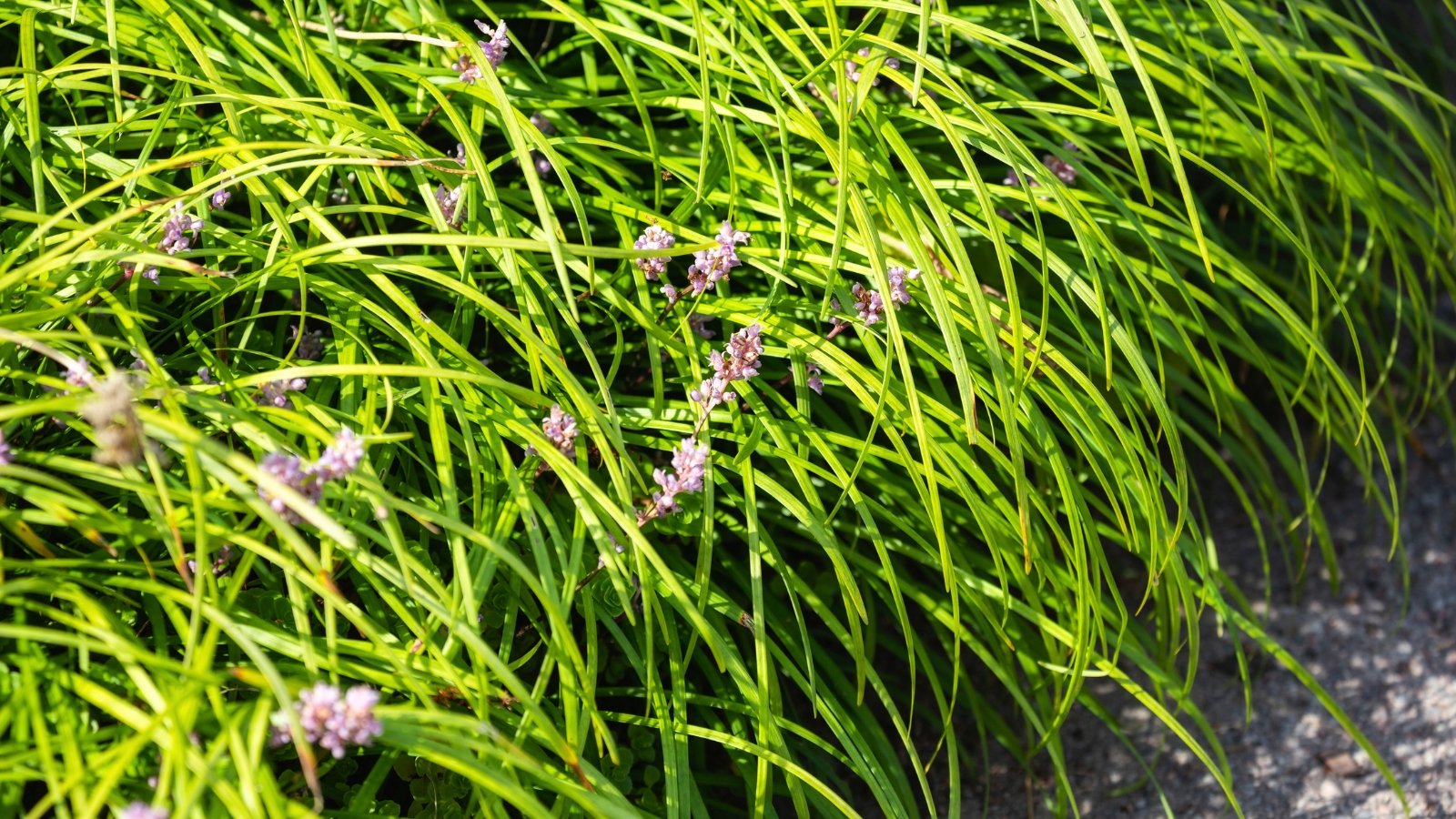 Rhizomes help this grass-like plant fill shady ground.
Rhizomes help this grass-like plant fill shady ground.Creeping lilyturf is an aggressive spreader. This species of lilyturf does, in fact, creep. It has underground rhizomes that sprout new plants away from the ones you planted.
Lilyturf has a grass-like appearance and works well in alternative lawns. You can’t walk on it, but you can put stepping stones into the dirt and create pathways around its beautiful leafy growth.
Japanese Pachysandra
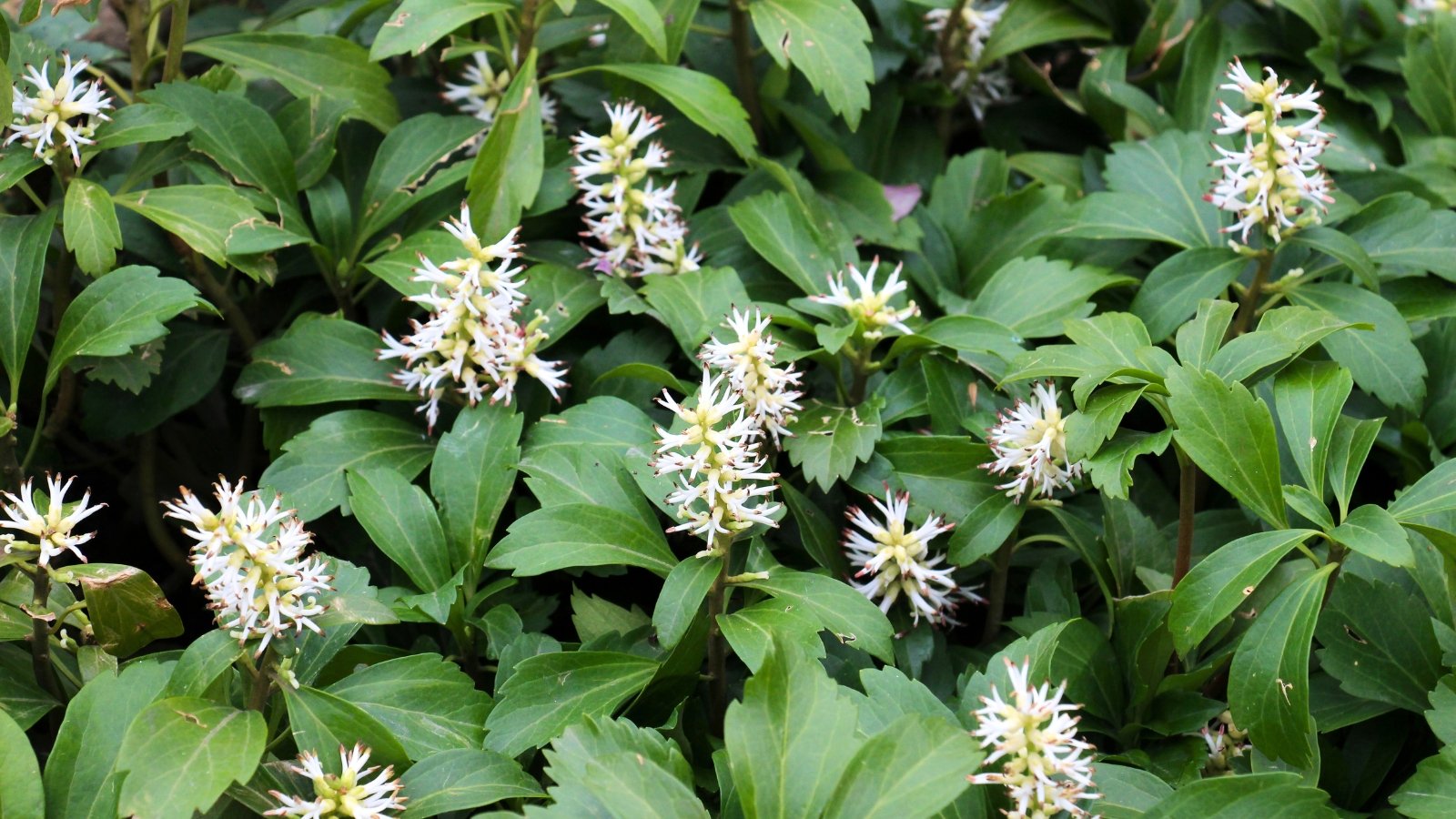 Spreads fast with rhizomes in shady garden beds.
Spreads fast with rhizomes in shady garden beds.This low-growing spreader sprouts rosettes of slightly serrated leaves. They create dense stands over time, filling bare sites with beautiful growth. Japanese pachysandra uses underground rhizomes to cover shaded gardens with sprouts.
Blooms appear on the plant in early spring, though they’re inconspicuous compared to the leaves. Most gardeners plant this groundcover to enjoy its easy-growing and spreading nature.
Japanese pachysandra is invasive in some eastern states. Consider using the native plant alternative, Allegheny spurge. It also goes by Mountain spurge, and its scientific name is Pachysandra procumbens.
Carpet Bugle
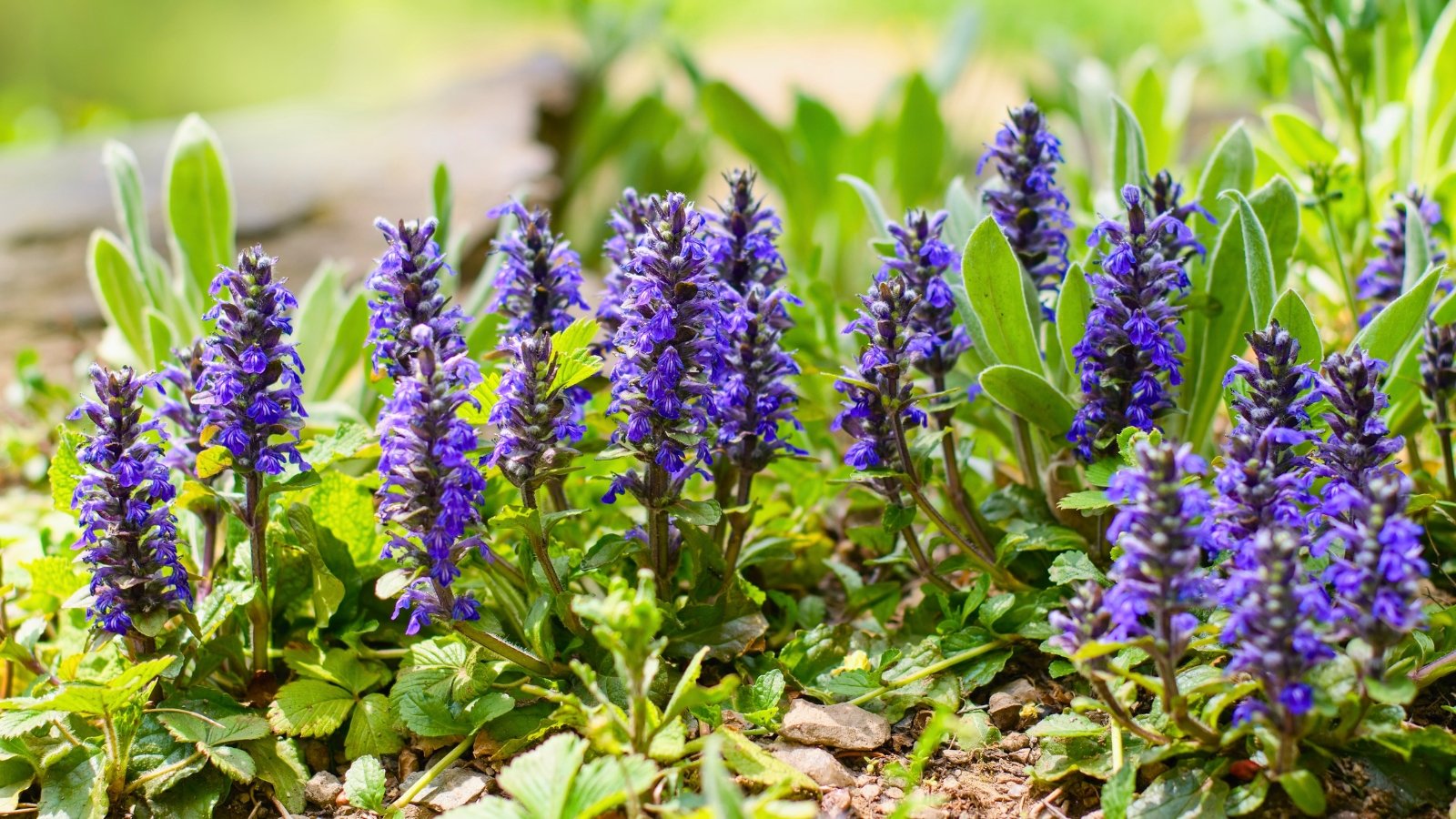 Tough groundcover that doesn’t mind low light or crowding.
Tough groundcover that doesn’t mind low light or crowding.Carpet bugle is the definition of a plant that spreads aggressively in shade. It’s a vigorous groundcover that blankets the soil with green, purple, or variegated leaves. In spring, spikes of small blossoms grow from each rosette of leaves.
Many varieties of carpet bugle exist for the adventurous gardener to choose from. Try ‘Burgundy Glow’ for a beautiful mix of white, pink, green, and burgundy hues. Or, opt for purple-leaved varieties like ‘Chocolate Chip’ or ‘Atropurpurea.’
Carpet bugle spreads readily like mint and periwinkle. Let it roam and creep, or limit its growth by pulling up unruly rosettes in spring.
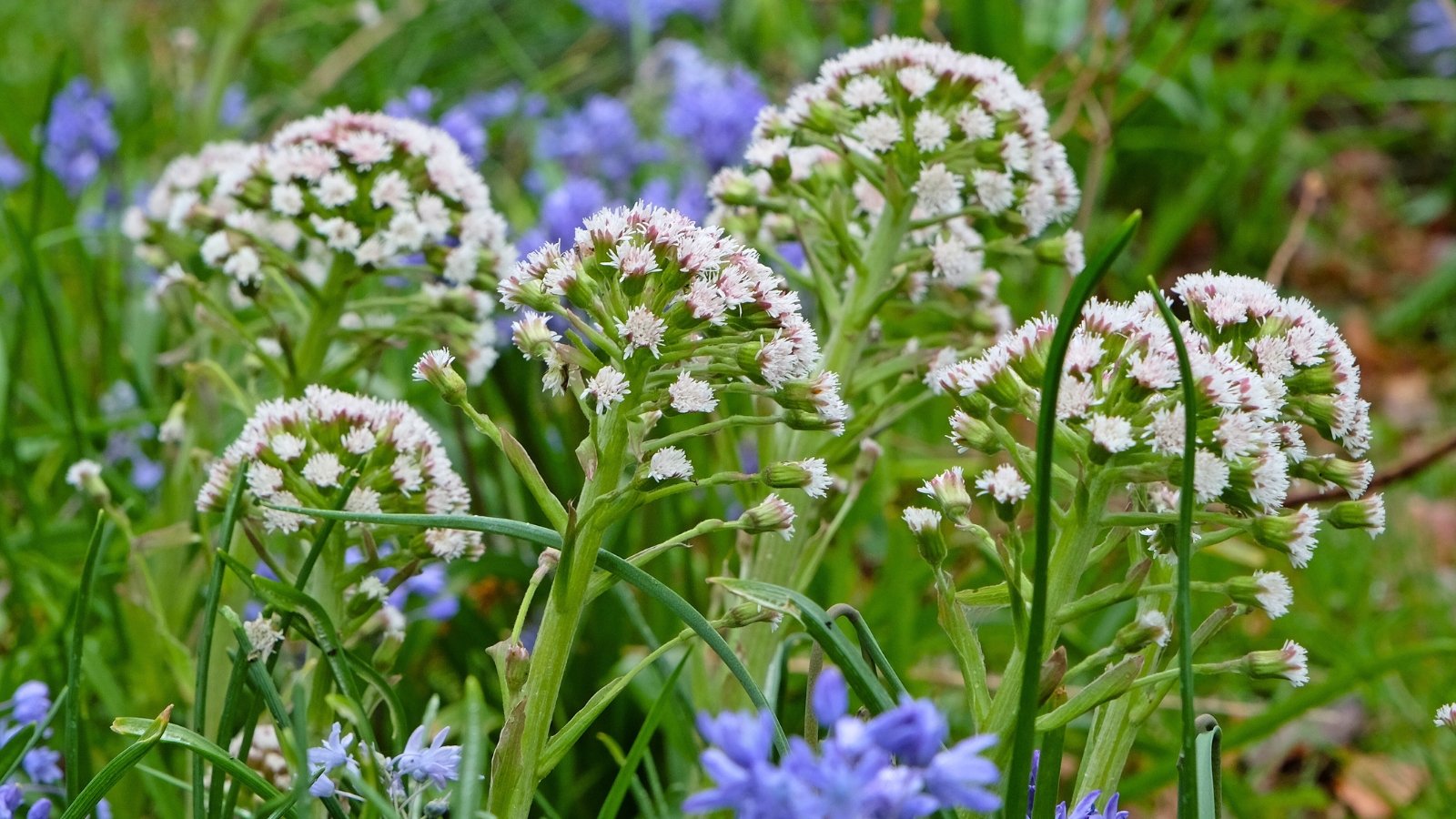 Huge leaves and fluffy seedheads make a bold spreader.
Huge leaves and fluffy seedheads make a bold spreader.Western coltsfoot sprouts majestic lobed leaves that may reach up to four feet tall, but more often to three feet. This spreading roamer is an iconic native species of the U.S., growing from Alaska to California. It’s a stunning plant that spreads in the shade beneath larger trees and shrubs.
In spring and early summer, white flower clusters appear that are mildly aromatic. They’ll grow into fluffy seed heads that scatter throughout the yard.
Western Wild Ginger
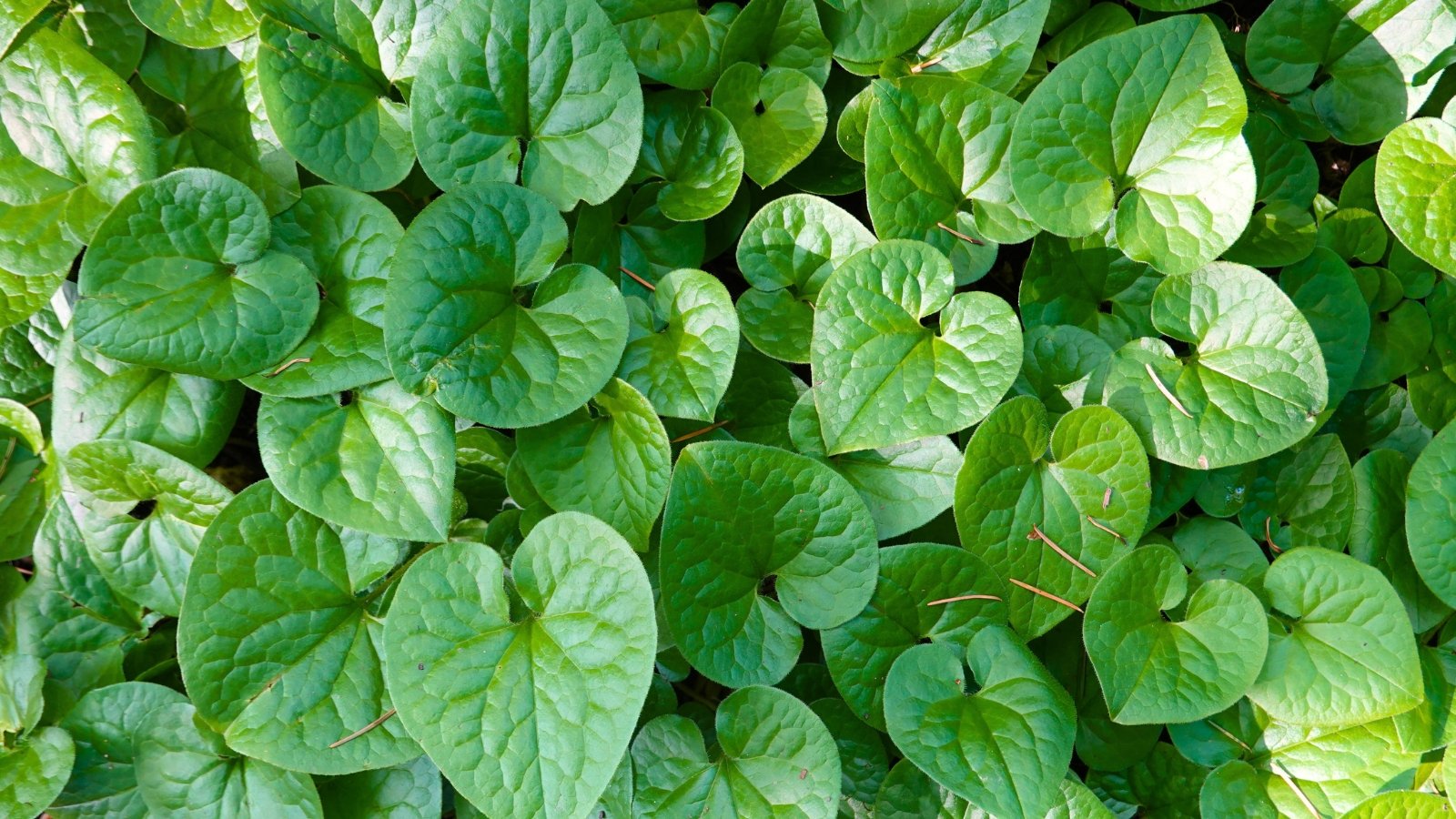 Slow creeper with heart-shaped leaves and hidden flowers.
Slow creeper with heart-shaped leaves and hidden flowers.Western wild ginger is a lush, low-spreading groundcover that’s native to the western U.S. It’s a perfect plant for spreading in shade, as it prefers growing underneath taller trees and shrubs. Not only does it have heart-shaped green leaves, but it also features unique-looking flowers that hide under the foliage.
Western wild ginger forms extensive groupings over time. Plant multiple plants in an empty spot of the garden, or let them form clumps in scattered sites. They’re beautiful both en masse and in isolated locations.
Canadian Wild Ginger
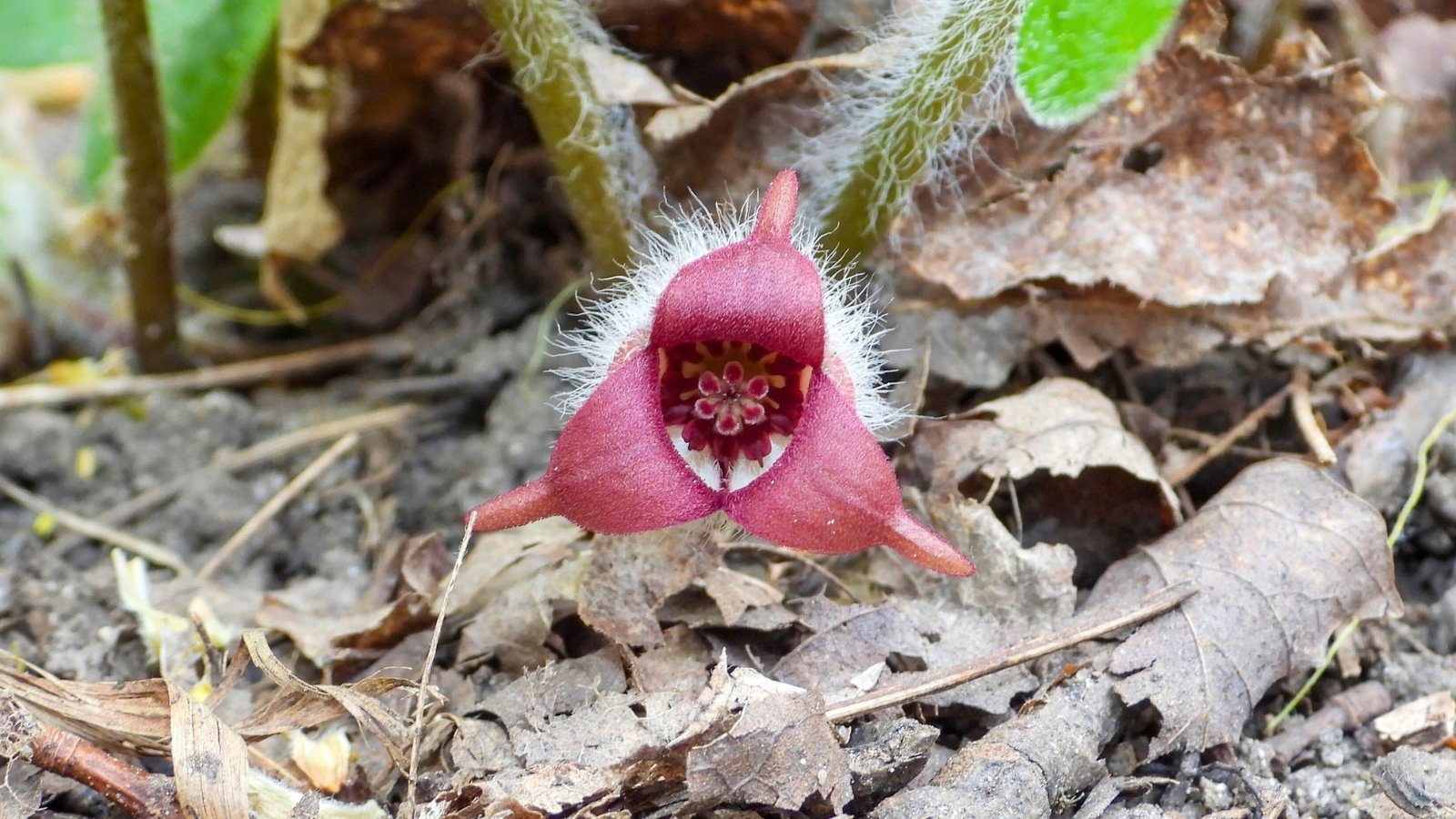 Spreads slowly in damp shade with large, bold leaves.
Spreads slowly in damp shade with large, bold leaves.Canadian wild ginger is the East Coast’s version of western wild ginger! It’s a similarly aggressive groundcover that fills forests with beautiful leaves and hidden blooms.
Canadian wild ginger is more cold-hardy but less heat-tolerant than western wild ginger. Keep it moist throughout the growing season to ensure it doesn’t dry out completely. Protect it with mulch, like compost, to preserve moisture below the ground.
Sweet Woodruff
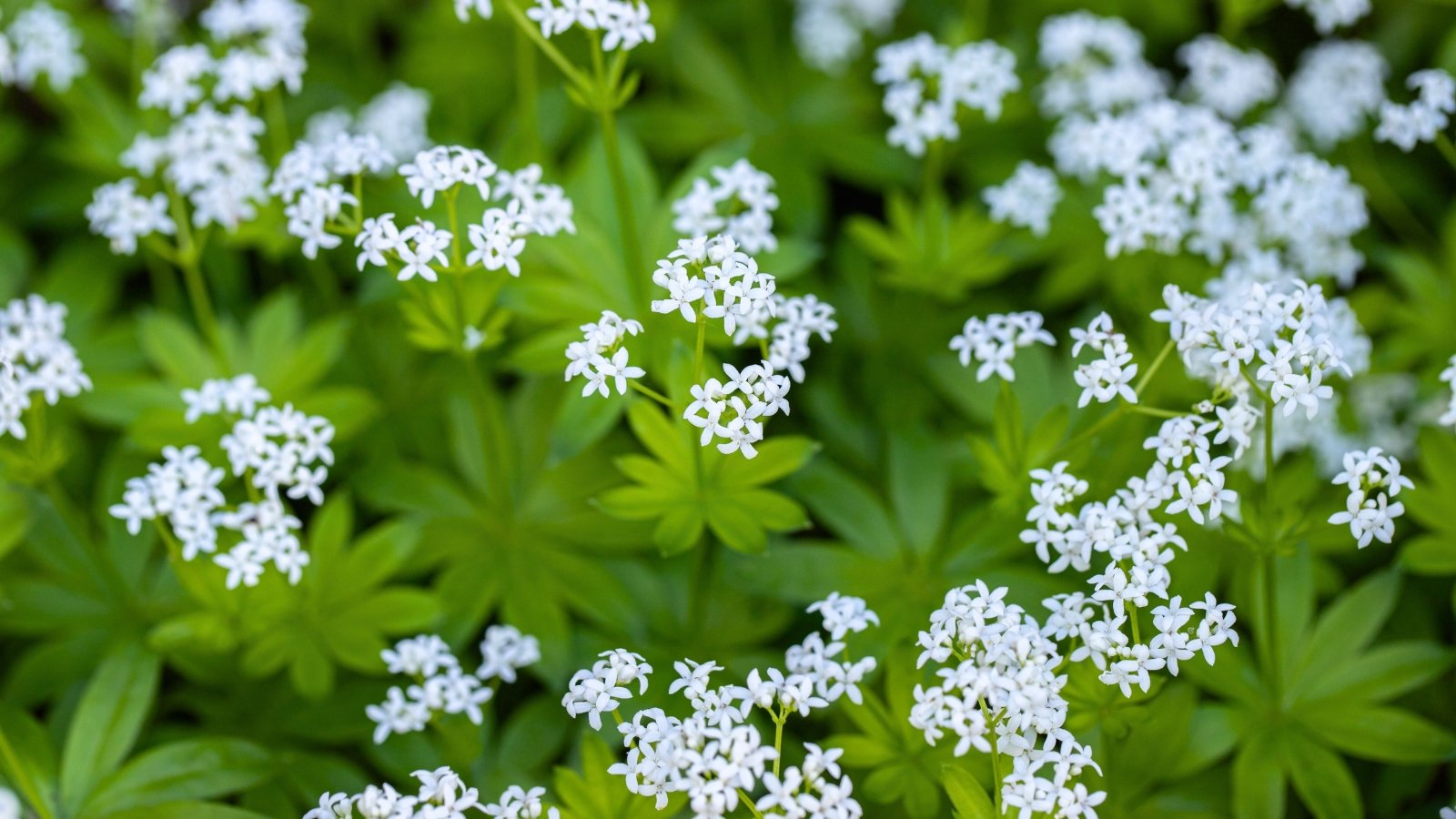 Fragrant bloomer that spreads quickly without barriers.
Fragrant bloomer that spreads quickly without barriers.Sweet woodruff is sweet, indeed! It blooms with small, white flowers that emit a wonderfully pleasing aroma. Let it fill your shade garden with its thin leaves and fragrant white blooms.
Sweet woodruff can grow out of bounds because of its aggressive nature. Limit its spread with barriers like logs and edging, or let it creep as it will. Sweet woodruff is at its best in a cottage-style setting alongside other shade plants and flowering perennials.


 1 day ago
18
1 day ago
18
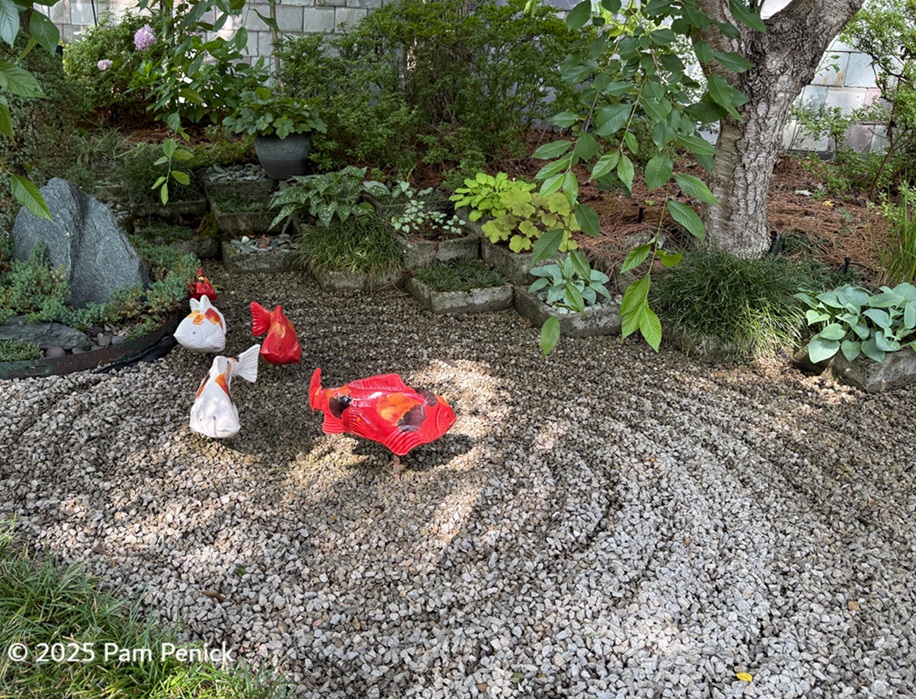
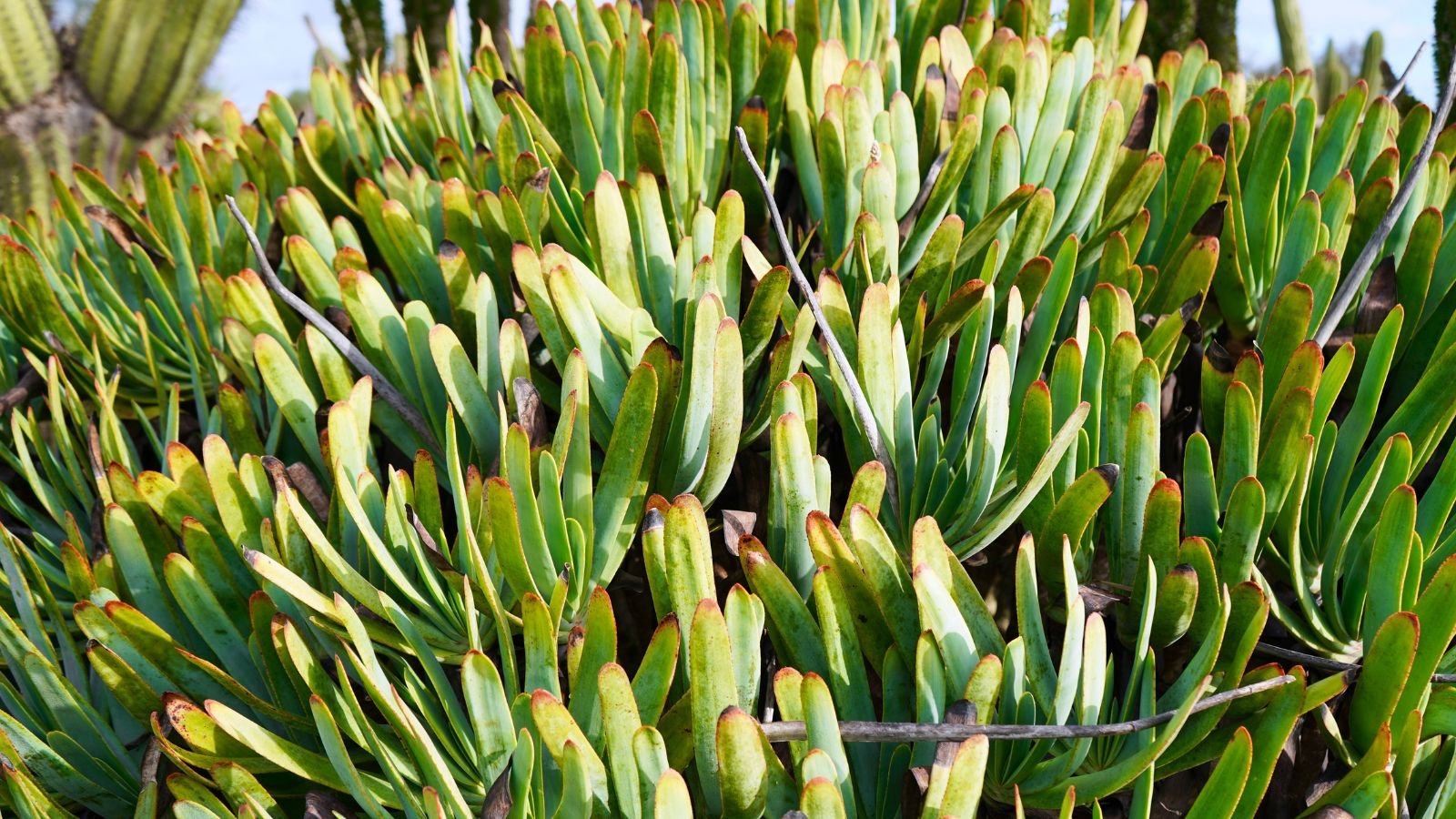




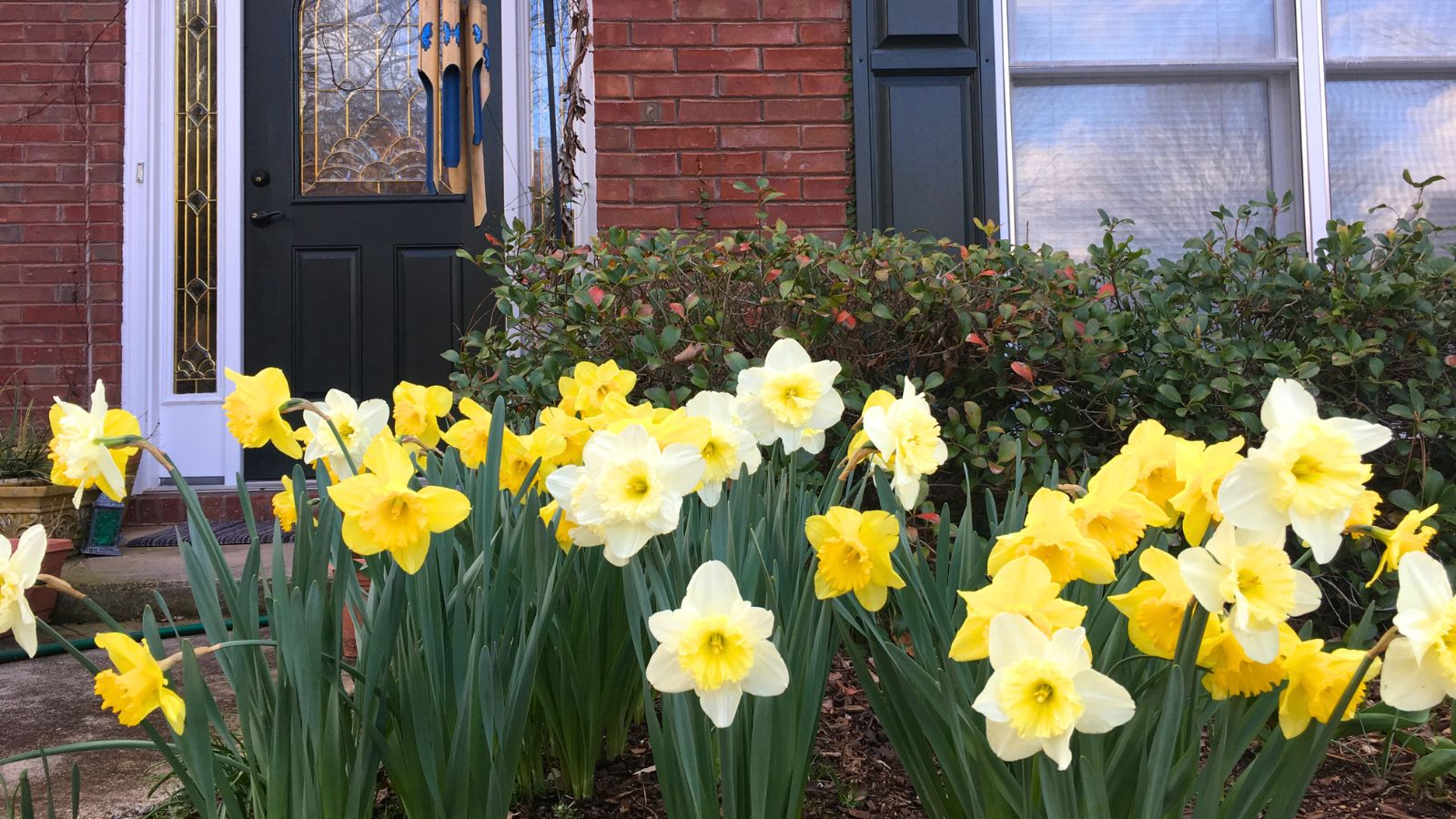














 English (US) ·
English (US) ·  French (CA) ·
French (CA) ·